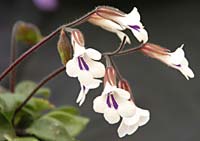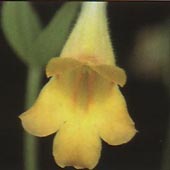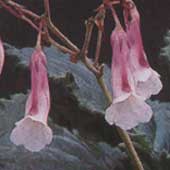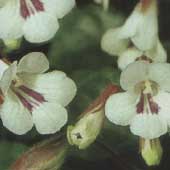 Primulina (Chiritas)
Primulina (Chiritas)
On this page you will find growing hints for the plants we grow and sell. To have a look at the varieties we have please look around our online shop or why not order a catalogue.
The genus Primulina (Chirita) contains about 150 species, most have only been discovered comparatively recently and few are in cultivation, until now none being produced commercially. Chirita comes from the Hindustani word meaning Gentian.
They originate from Sri Lanka and India through the Himalayas into China and South East Asia down the Malay Peninsula and as far as Sumatra, Java and Borneo.
The plants can be shrubby perennial herbs, soft-stemmed annual herbs, stemless perennial rosettes or diminutive herbs with only one or two leaves. Many of the species grow on rocky hillsides or cliffs often on limestone. They vary from Streptocarpus by having straight rather than twisted fruits.
Most do not stand high temperatures.
PRIMULINA CULTIVATION
Primulinas are close relatives of Saintpaulias (African Violets) and Streptocarpus and originate in very similar conditions in the wild, except in Asia rather than Africa. This means the cultivation conditions are very similar.
They need to be started in small pots as they prefer to be pot-bound. Small species such as P. tamiana will stay small and need pot sizes similar to Saintpaulias. Some of the bigger growing species and hybrids will need regular potting on, eventually growing to a number of feet in size.
Always use a well drained light compost, a proprietary peat or fibre based compost is fine but not a loam based compost.
Only water when necessary, wait until the compost is dry to the touch. Feed a high potash feed weekly throughout the growing season.
Normal house temperature is ideal for Primulinas. In a conservatory or greenhouse they prefer not to go to temperaturesabove 30°C (86°F). Most Primulinas will go down to a minimum of frost protection.
They are not too fussy about humidity levels and will tolerate low humidities in the house. They however do not like high humidities and wet compost during low temperatures in the winter.
Primulinas prefer good light levels but do not want the full sun during the summer months. In the house West, East or North windowsills and in the greenhouse 50% shading is required in the summer.
Different Primulinas flower at varying seasons throughout the year.
PRIMULINA PROPAGATION
The species can be propagated by seed, but the hybrids will not come true from seed. The seed is very fine and should be sown on the moist surface. Enclose in a propagator or cover in glass.
Propagate from a leaf in a similar way to Saintpaulia. Remove a healthy dark leaf by making a clean cut at the base of the petiole. Place this upright in the compost. A mixture of peat based compost and vermiculite is the most suitable medium. Cover in a polythene bag or place in a propagator to keep humid. Maintain at room temperature.
The leaf will root within a few weeks. It will then produce a mass of plantlets which can be teased apart.
The larger leaved Primulina can be propagated by cutting the leaf into sections, similar to Streptocarpus propagation. The side veins will each produce a plantlet.
 Aiko |
 heterotricha |
 |
 |
| New
York |
tamiana |

